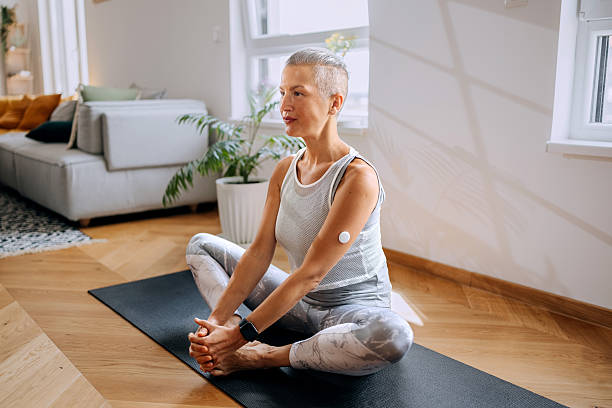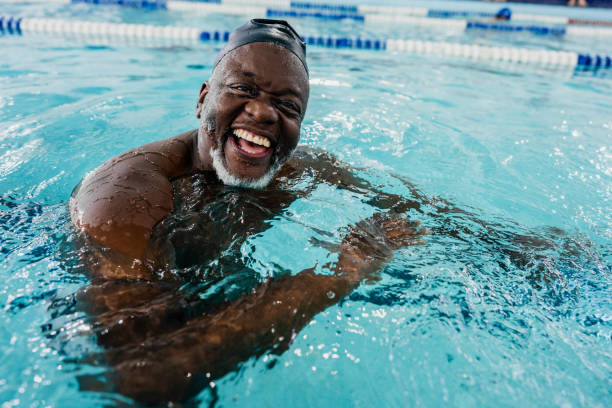Living with diabetes doesn’t mean you have to avoid exercise—in fact, staying active is one of the best things you can do. Exercise helps lower your blood sugar, reduce insulin resistance, and improve your heart health. It also boosts your energy, supports weight loss, and helps you manage stress.
And the good news? You don’t need a gym membership or fancy equipment to get started. Simple activities like walking, stretching, or dancing at home can make a big difference. The key is to move your body every day, even if it’s just for a few minutes.
In this post, we’ll explore the best types of exercise for people with diabetes, why they work, and how to make them part of your daily life.
Why Exercise Matters for People with Diabetes
Whether you have type 1 or type 2 diabetes, physical activity plays a key role in managing your condition. Exercise helps your body use insulin better and keeps your blood sugar in check. It also helps lower A1C levels over time, which reduces the risk of long-term complications.
Regular movement can improve blood flow, lower blood pressure, and strengthen your heart. Plus, being active can lift your mood and boost your overall well-being. Even short workouts can make a big impact when done consistently.
Health Benefits of Exercise for Diabetics
- Lowers blood sugar levels
Exercise helps your muscles use glucose for energy, which can lower your blood sugar during and after activity. - Improves insulin sensitivity
Regular movement makes your body respond better to insulin, helping you keep your blood sugar in a healthy range. - Aids in weight loss
Staying active burns calories, builds muscle, and helps you reach or maintain a healthy weight—key for managing diabetes. - Strengthens the heart
Exercise improves circulation, lowers blood pressure, and reduces the risk of heart disease, which is common in people with diabetes. - Reduces stress and improves mood
Physical activity releases feel-good chemicals in the brain that help you feel calmer, less anxious, and more focused. - Boosts energy and sleep quality
Moving your body during the day can give you more energy and help you sleep better at night, making it easier to manage daily tasks.
According to the American Diabetes Association (ADA), adults with diabetes should aim for at least 150 minutes of moderate-intensity activity per week.

Best Types of Exercise for Diabetes
Let’s break down the most effective forms of exercise for people living with diabetes. Each offers unique benefits, and mixing them up can give you the best results.
1. Walking – The Easiest Way to Get Moving
You don’t need to run marathons. A simple walk around your neighborhood counts as real exercise. Walking is easy on your joints, doesn’t require any special gear, and can be done almost anywhere. Just 20 to 30 minutes a day can help lower blood sugar, improve heart health, and boost your mood. It’s a great way to stay active without feeling overwhelmed. Start slow, set small goals, and enjoy the fresh air as you move your body.
Why it helps:
- Low-impact and gentle on joints
- Helps burn calories and lower blood sugar
- Easy to do daily
Pro tip:
Aim for 30 minutes a day, 5 days a week. Even three 10-minute walks a day can work wonders.
2. Resistance Training – Build Strength, Burn Sugar
Resistance or strength training helps you build muscle, which makes your body better at using glucose. More muscle means your body can absorb sugar from the blood more easily, helping to lower blood sugar levels. Strength training also boosts your metabolism, so you burn more calories even at rest. Simple exercises like lifting weights, using resistance bands, or doing bodyweight moves like squats and push-ups can make a big difference. Aim to include strength training two to three times a week for the best results.
Examples:
- Bodyweight exercises (squats, push-ups)
- Resistance bands
- Light weightlifting
Benefits:
- Increases insulin sensitivity
- Helps with weight control
- Supports joint and bone health
Start with two to three sessions per week. You don’t need heavy weights—a set of dumbbells or even soup cans can do the trick.
3. Yoga – Mind and Body Balance
Yoga combines movement, breathing, and relaxation. It’s great for reducing stress, which can spike blood sugar. By helping you stay calm and centered, yoga supports better blood sugar control. It also improves flexibility, balance, and strength without putting too much strain on your body. Even a short daily routine can help lower anxiety, improve sleep, and boost your mood. Best of all, yoga can be done at home with little or no equipment, making it easy to fit into your schedule.
Benefits of yoga:
- Lowers blood pressure
- Improves flexibility and balance
- Calms the nervous system
- May improve glucose control
A study in the National Library of Medicine shows that yoga can be a safe and effective tool for managing type 2 diabetes.
4. Cycling – Easy on the Joints, Great for the Heart
Whether on a stationary bike or out in the fresh air, cycling is an excellent cardio option. It gets your heart pumping, burns calories, and helps lower blood sugar levels. Cycling also builds strength in your legs and improves joint health without putting too much pressure on your knees or ankles. You can ride at your own pace, making it great for beginners and advanced riders alike. Plus, it’s a fun way to explore your neighborhood or enjoy a workout indoors when the weather isn’t ideal.
Why it works:
- Improves heart and lung function
- Burns calories
- Lowers blood sugar levels
Start with 15-30 minutes a few days a week. If you have balance issues, consider using a recumbent bike.
5. Swimming – Full-Body, Low-Impact Workout
Swimming is gentle on the joints but works your entire body. The water supports your weight, which makes it easier to move without pain or strain. It’s perfect for people with arthritis or neuropathy because it reduces pressure on the feet, knees, and hips. Swimming improves heart health, builds muscle, and helps lower blood sugar levels. It also boosts flexibility and balance. Whether you swim laps, take a water aerobics class, or simply move around in the pool, it’s a safe and effective workout for people with diabetes.
Benefits:
- Boosts cardiovascular health
- Helps lower blood sugar
- Increases muscle strength
Always check your blood sugar before and after swimming to stay safe.
6. Dancing – Fun and Functional
Who said exercise has to be boring? Dancing gets your heart rate up and lifts your mood. It’s a fun way to stay active without feeling like you’re working out. Whether you’re following an online dance class or just moving to your favorite songs at home, dancing burns calories and helps lower blood sugar levels. It also improves balance, coordination, and flexibility. Plus, dancing can reduce stress and boost confidence, making it a great option for both your body and mind.
Great options include:
- Zumba
- Line dancing
- Ballroom or freestyle
Dancing for 20–30 minutes can help with coordination, flexibility, and blood sugar control.

What to Know Before You Start
Exercise is great—but safety comes first, especially if you’re living with diabetes. Before starting any new workout, talk to your doctor to make sure it’s right for you. Check your blood sugar before and after exercise to avoid lows or highs. Always keep a snack with you in case your sugar drops. Wear proper shoes to protect your feet and prevent injury. Stay hydrated, take breaks when needed, and listen to your body. Follow these tips to stay safe and get the most out of your workouts.
Talk to Your Doctor First
Before starting any new exercise routine, check with your healthcare provider. This is extra important if you have heart disease, nerve damage, or foot problems.
Monitor Your Blood Sugar
Test your blood sugar before and after exercise. If it’s too low, eat a small snack like fruit or crackers.
Stay Hydrated
Drink water before, during, and after you exercise.
Wear the Right Shoes
Choose shoes that support your feet and prevent blisters or sores. Diabetics are more prone to foot issues, so don’t skip this.
Start Slow
If you’re new to exercise, take it one step at a time. Start with short sessions and build up gradually.
Make It a Habit: How to Stay Consistent
Consistency is key. Exercise only works if you stick with it. Here’s how to stay on track:
- Schedule it: Treat it like an appointment.
- Find a buddy: Exercising with a friend can boost motivation.
- Pick what you enjoy: Walking your dog, gardening, or dancing counts!
- Set goals: Small, realistic goals help keep you moving forward.
Managing Exercise and Blood Sugar
Exercise affects everyone differently. Here’s how to manage your blood sugar while staying active:
Before Exercise:
- Check your blood sugar (ideal: 100–250 mg/dL)
- Have a snack if it’s under 100 mg/dL
During Exercise:
- Carry glucose tablets or a small snack
- Stay hydrated
After Exercise:
- Monitor your levels again
- Note how your body reacts to different activities

When to Avoid Exercise
Hold off on exercising if:
- Your blood sugar is above 300 mg/dL
- You feel dizzy, short of breath, or have chest pain
- You have an open wound or foot sore
Always listen to your body. If something feels wrong, stop and talk to your doctor.
Stronger, Healthier, and More in Control
Living with diabetes doesn’t mean giving up on being active. In fact, regular movement is one of the best ways to manage your health. The right exercises can help you feel better, stay in control of your blood sugar, and enjoy life more. Physical activity also boosts your mood, supports weight management, and helps prevent other health problems. Whether it’s a brisk walk, a calming yoga session, or dancing in your living room, movement matters. You don’t have to do intense workouts—just get your body moving.
Start small. Stay safe. And choose activities you love—because the best exercise is the one you’ll keep doing. Even 10 minutes a day can make a big difference over time.
Ready to take the first step?
Talk to your doctor, pick your favorite activity, and move toward a healthier you—starting today.

